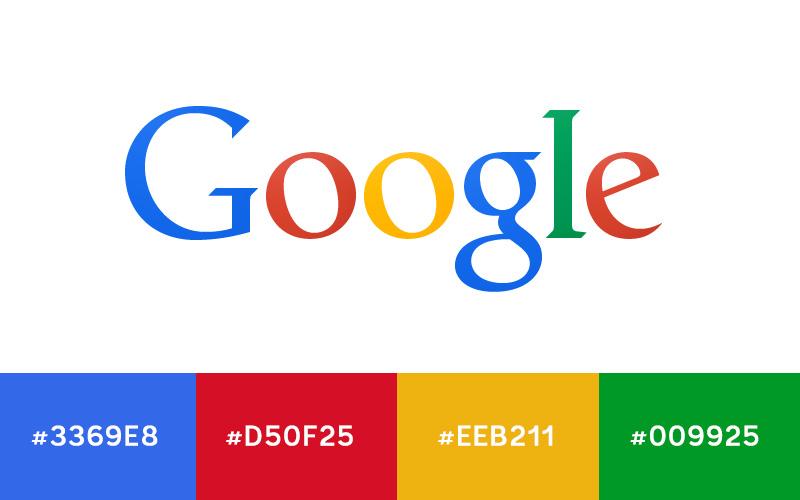brand identity kit
8 essential elements that should be a part of your brand identity kit
Brands that want to be successful need to establish a strong brand identity. Identifying and defining the relevant brand identity elements can help you stay ahead of competitors.
To get the attention, trust, and loyalty of your customers you need to decide what you want your clients to think of your brand. That’s your brand identity. This article will help you learn the essential brand identity elements you should decide on to establish your brand identity.
What is brand and brand identity?
A brand is how people perceive your company. The brand depends on design choices and other elements that you decide on to shape that perception. The choices speak for who you are, what you offer, and why you’re a better choice than your competitors.
Brand identity is the visible elements of a brand that identify it and make it unique. Some elements of brand identity like your company’s logo, colors, or typography are necessary, while others are extras. In this article, we’ll focus on eight essential components that your brand identity kit should have.
Why do you need a brand identity?
With a market full of similar brands, companies simply have to stand out to be able to beat the competition. Building a brand identity is not just important but it’s necessary. Every business owner wants to run a successful well-loved brand. How to do it? By forming a relationship between a consumer and a product or brand.
Relationships are built on emotions. Provoking people's emotions can be achieved with the right choices. Studies show that positive emotions toward a brand have a far greater influence on consumer loyalty than other feelings.
Now we’ve covered the basics, let's focus on the essential brand identity elements.
TABLE OF CONTENTS
1. Color scheme
A brand's color scheme is a key ingredient of the brand identity kit. Once a brand decides on the colors, it can work on the rest of the components.
Think of one to three primary colors that suit your brand's personality.
Some colors have certain emotions attributed to them. Blue represents calmness, red - energy while light purple is associated with romance. So, depending on the tint and shade of a chosen color, you can elicit different emotions. A tint means the primary color mixed with white while the shade is the color mixed with black.
While it’s best to choose only a few primary colors, a brand can have a few additional colors to support the primary ones. The secondary colors can help your brand stay exciting but still true to your brand identity.
The official Google colors are blue, red, yellow, and green. Google has been using these four colors since its launch in 1998 but has changed the shades slightly to make the brand look more modern.

Interestingly, color is such an important part of the brand identity kit that some companies trademarked their signature brand colors. Examples are UPS brown, Barbie pink, or T-Mobile magenta.
2. Logo
Every brand needs a logo. It would be hard to find a company with no logo these days.
A brand’s logo is a visual image that represents a company. It’s supposed to be easy to recognize and understand. A logo can involve symbols, text, or both and is often created by a graphic designer. A person designing a brand's logo should understand the brand's personality and be able to put it into an easy-to-recognize image.
A logo is the first interaction we have with a brand. A good logo sticks to the consumer's mind and brings up some emotions when they see it again.

Your brand’s logo will appear everywhere your brand goes and on every publication it releases. It will be on your website, business cards, invoices, social media pages, and all your marketing collateral. That’s why it’s critical for a logo to represent what a brand is all about.
The simpler the logo the better. A simple logo is easy to remember for the customers. From the company’s side - a simple logo is easier to use in various publications, including digital and printed ones.
A logo needs to be flexible, too. It has to look great on social media accounts, emails, or when you build a website for different screen sizes.
3. Shape of your brand elements
Your logo, as well as images on your website, layout design, packaging, and other brand elements, have to have a defined shape. The shapes are another element of your brand identity kit.
You don’t have to stick to just one shape. Bear in mind that shapes elicit feelings. Circles make the audience feel unity and harmony. Triangles - rationality, creativity, and balance. Square shapes evoke a sense of conformity, honesty, and rationality
Imagine a circular logo with soft edges. Then think of a square logo with sharp edges. People will react differently to either of these shapes. The first one would be great for a baby products brand, as it elicits feelings of protection and perfection. The other one would suit a brand selling hardware tools, as we identify harsh lines with strength and resilience.
Shapes are around us and everywhere we look. It’s worth defining them for your brand identity kit.
4. Visuals
Visuals are different images you use in marketing campaigns as well as advertising. Visuals include all the photos, stock images, and graphics you publish in your publications as well as your logo. All these define your brand's aesthetic.
The choice of a brand's visuals depends on your brand personality. Take for example the visuals of Looks by Luks brand, which sells summer garments. The company’s Instagram account is full of clear images. Pastel colors scream “Summer” and brighter days.

Some organizations, like How to Save a Planet podcasters, chose to publish these types of images on their Twitter account:

Although the podcast brand asks big questions, like “what do we need to do to solve the climate crisis, and how do we get it done”, the brand wants to be seen as a fun one. The copy and the graphics used reflect the brand’s fun personality.
Starbucks has a different tactic when it comes to visuals. Most of the images on the company’s Twitter account include their branded cup:

Since we spend a lot of time in a digital world, setting branded guidelines for the visuals is critical. Some companies use Digital Asset Management (DAM) systems to organize their digital resources. A DAM solution can be an important part of improving brand awareness. It lets you create and maintain an online brand guide that will help you ensure brand consistency and transparency with easy access to everyone involved.
5. Brand voice
A company that wants to develop a relationship with its customers should decide on a brand voice and use it consistently. Your brand's voice is how you choose to speak to your audience.
Before deciding on your brand's voice, think about what mission, vision, or values your company wants to be known for. Who is your audience? You would speak differently if you were talking to your friends or acquaintances. The words and phrases you would be using would also be different.
Check out your competitors’ brand voice. Going through your main competitors' websites and social media can give you a basic idea of their way of communication. Analyze competition by looking at their best-performing keywords. If you want to become visible, you need to understand who your competitors are, what they’re doing, and how you can do it better. Then answer yourself: Do I want my brand to sound similar? Or can I bring a different voice to the market’s niche?
Coca-Cola is one of the best-known brands in the world. Their brand voice has been consistent throughout. It’s always positive, friendly, and down-to-earth. The brand's mission is to show how happy life looks like.


Your brand guide should include clear information about your brand's voice. So, all your brand’s marketing collateral will sound like they were written by the same person.
Your writers should follow the same style rules as well as always check for grammar.
6. Taglines
A tagline is the essence of brand messaging. If you come up with the right one, it could stick with your brand for decades. Here are some examples of catchy taglines from people’s favorite brands:
- Walmart: “Save money. Live better.”
- Toyota: “Let’s go places.”
- Burger King: “Have it your way.”
- Nike: “Just Do It.”
A brand’s tagline is an easy-to-remember motto or phrase which is a part of a brand’s identity kit and serves as a permanent expression of the company’s mission. A good tagline is long-lasting, easy to remember and recognizable.
Try writing a paragraph that explains who you are as a brand and what you do. Keep it simple. Test your taglines with your team and customers
Slogans are similar to taglines but are created for specific product lines or individual marketing campaigns.
Many people consider Nike’s “Just Do It.” tagline as the best tagline of the 20th century. It encourages people to believe that they can be successful too, by wearing Nike products.

Nike wanted a short, simple, and memorable tagline. The company hired an advertising agency Wieden+Kennedy that was responsible for the creation of the famous slogan. Dan Wieden explained the story behind the slogan in an interview back in 2015. As it turned out, the words were actually a murderer’s last words!
7. Brand positioning
Brand positioning is the niche that your brand fills.
When you determine your brand’s persona, you determine not just what it offers to buyers, but how it fits on the market. What about the prices? Is it a luxury item, or something affordable for everybody? What features make your product more attractive? Get to know your competition for a better understanding of where your brand could fit.
Defining your brand positioning will also help with the marketing strategy, and when deciding on the color scheme and logo.
For example, a higher-priced brand that aims to position itself as a luxurious and exclusive choice would go for darker colors, like black or dark gray. Look at Mercedes’ poster below. The dark colors indicate that the car is an expensive, luxury model.

On the other hand, a brand offering an economic version of the same product might want to emphasize it with warm colors, like red or orange. Warm colors often evoke feelings of happiness, optimism, and energy. Using them has an attention-grabbing effect and makes people take action. Fiat 500’s poster is an example of such positioning.

When you think about the positioning of your brand, name your target customers, and think about how you can be different from the competitors. These are the basic steps to setting a brand positioning strategy.
8. Fonts
Another key element of a brand identity kit is the font. Every written publication, including the logo (if it consists of text), the website, email letters, uses fonts and these should not be random. The font is a means of communicating. The one you select will be used to communicate the brand’s personality and values.
Some big brands use specific fonts for their logo, like Coca-Cola:

The Coca-Cola logo was created by Frank Mason Robinson back in 1885. The typeface used in the logo is Spencerian script, and it was very popular in the US at the time. It imitates handwriting and used to feel strong and formal and yet elegant and personal. It definitely worked for the brand. Now, we cannot imagine the drink with a different logo.
The typeface you choose should work well with your brand’s logo and color scheme. The simpler the better. Fancy fonts should be avoided as they often distract from what the text is all about.
Choosing one of the default fonts is a safe way. They're easy to read and usually have a few typefaces if you want to stand out.
Here are some basic rules on using fonts and text for brand content:
- Avoid mixing more than two font families.
- Avoid mixing contrasting fonts, like serif and sans-serif.
- Choose the font size that reads well.
- Align text to the left.
- Avoid hyphenation.
- Justify the text if it's over 60 characters per line.
- Don't use all-caps. Typing in all capital letters on the internet is considered rude.
Fonts should not be underestimated as they are just as important as the visuals, or shapes of your brand identity elements. In fact, recent research shows that web design is 95% typography.
In Closing
Every brand uses brand identity elements. They are all important and come together to form how people see your company and products.
Building a brand is so much more than designing a logo. Defining a color scheme, fonts, shapes of your brand elements, visuals, choosing your brand’s voice, and coming up with the right taglines will help you create your brand’s unique look and feel.
Once you decide on your brand identity, be consistent. This way your brand will become recognizable, stay in people’s minds, and be competitive in the game of name recall.

Michal Leszczyński
Share this Post
